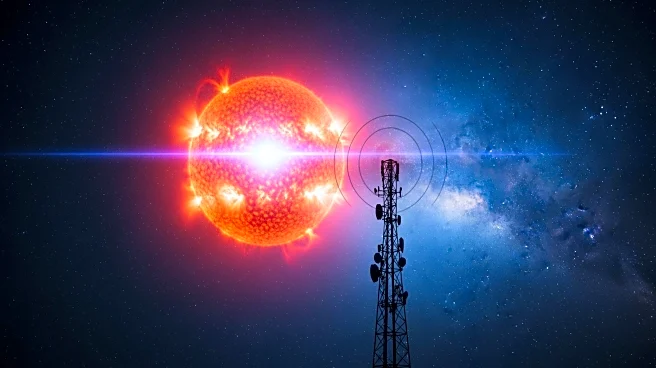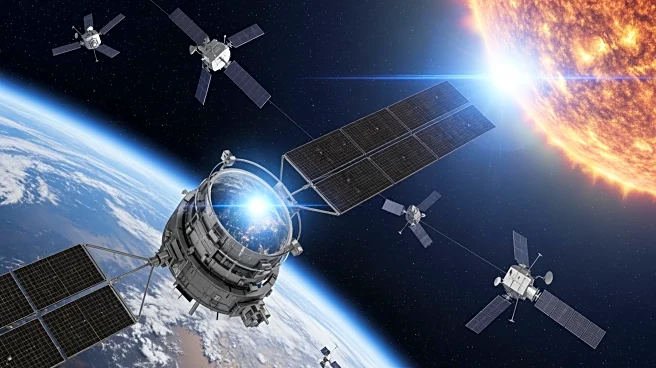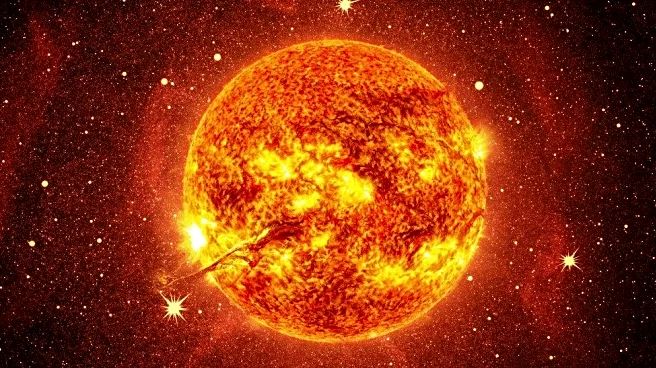What's Happening?
The National Oceanic and Atmospheric Administration (NOAA) has reported a series of solar flares disrupting radio communications globally. The Space Weather Prediction Center recorded a moderate solar flare from
sunspot AR 4274, which followed two larger flares earlier in the week. These flares have affected sunlit areas in North and South America, the North Pacific Ocean, and parts of Australia. The solar flares released coronal mass ejections, which, although not directly headed towards Earth, could interact with solar winds, potentially causing geomagnetic storm conditions.
Why It's Important?
Solar flares can significantly impact communication systems, affecting industries reliant on radio transmissions, such as aviation and maritime operations. The disruptions highlight the vulnerability of global communication networks to space weather events. As solar activity continues, industries may need to develop more robust systems to mitigate these effects. The potential geomagnetic storms could also enhance auroral displays, offering a visual spectacle but posing risks to electrical grids and satellite operations.
What's Next?
NOAA's Space Weather Prediction Center is analyzing the coronal mass ejection to assess any Earth-directed threats and anticipate geomagnetic responses. Industries affected by radio disruptions may need to implement contingency plans to maintain operations. Continued monitoring of solar activity is crucial to predict and prepare for future disruptions.
Beyond the Headlines
The increasing frequency of solar flares raises questions about the preparedness of global infrastructure to withstand space weather events. Long-term strategies may include investing in technology to shield communication systems and electrical grids from solar-induced disruptions.












